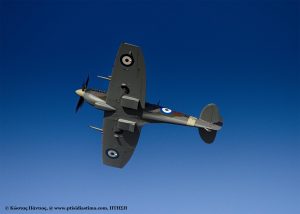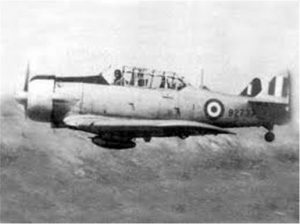A second old and legendary Hellenic Air Force (HAF) aircraft, the famous T-6 Harvard, with serial number s/n 493424, will be restored, hopefully, to flying status in Britain.
The initiative belongs to the “Ikaros” Foundation, in accordance with a relevant decision of the Minister of National Defense Nikolaos Panagiotopoulos.
This is the second aircraft that has served with the Greek colours that is restored with actions and funding from the “Ikaros” Foundation after the historic Supermarine Spitfire fighter with serial number s/n MJ755, which returned to flight status by a specialized company in Britain.
The first flying tests of the later have been completed with great success.

The T-6 Harvard s/n 493424, together with the aircraft engine and its components will be handed over to the public benefit Foundation “Ikaros” for a period of 2 years until the expected completion of the works.
The “Ikaros” Foundation undertakes all the expenses for the transportation of the historic aircraft to the special repair center in England.
It is worth noting that this particular T-6 Harvard aircraft was placed on a static display in the courtyard of the preserved neoclassical building of the Directorate of Aviation History in Paleo Faliro, opposite the Tae-Kwo-Do stadium.
Pandemic at a Crossroads as New Variants Loom (infographic)
According to the information so far, the intention of the authorities, both the HAF and the “Ikaros” Foundation, is the creation of a “Squadron of Historic Aircraft”, which in addition to the above two aircraft (the Spitfire, which is already flying, and Harvard) will have in its power 1 or 2 DC-3 Dakota transport aircraft, which will also be attempted to return to flight status.
According to the official HAF website the North American Aviation aircraft was named Texan, while the versions Mk.II A/B and Mk.III were renamed Harvard, and these are the versions that were given by the RAF to Greece, after 1945.

The Greek pilots, however, already knew the airplane quite well since during WWII they had flown the British version Mk.I when trained by the Royal Air Force (RAF) at its Aviation Training Center in Rhodesia.
After the WWII it was used with the colours of the then Hellenic Royal Air Force (EBA) as a training aircraft for the young Greek pilots but also participated in the operations of the Greek Civil War, mainly in reconnaissance missions (where the communist guerrillas had given them the nickname “the milkman”, because they flew very early in the morning over their positions and then informed the ground forces of the Hellenic Army) and secondarily in bombing missions. At that time the aircraft was flying with the 345, 346 and 347 Reconnaissance Squadrons.
In the 1950s Greece acquired an additional number of T-6 aircraft, this time from the United States, all of which were used intensively to train the students of the Icarus School (Hellenic Air Force Academy) and the Reserve Pilots School that was operating at the time, Greece needed new pilots and in large numbers to fly with the jets that were slowly being acquired at the time after the country’s accession to NATO. A total of 108 T-6s served in the HAF from 1945 until 1969, when the type retired from active duty having trained hundreds of pilots over the years.
Sources: Ptisi, parapolitika, HAF
Ask me anything
Explore related questions





